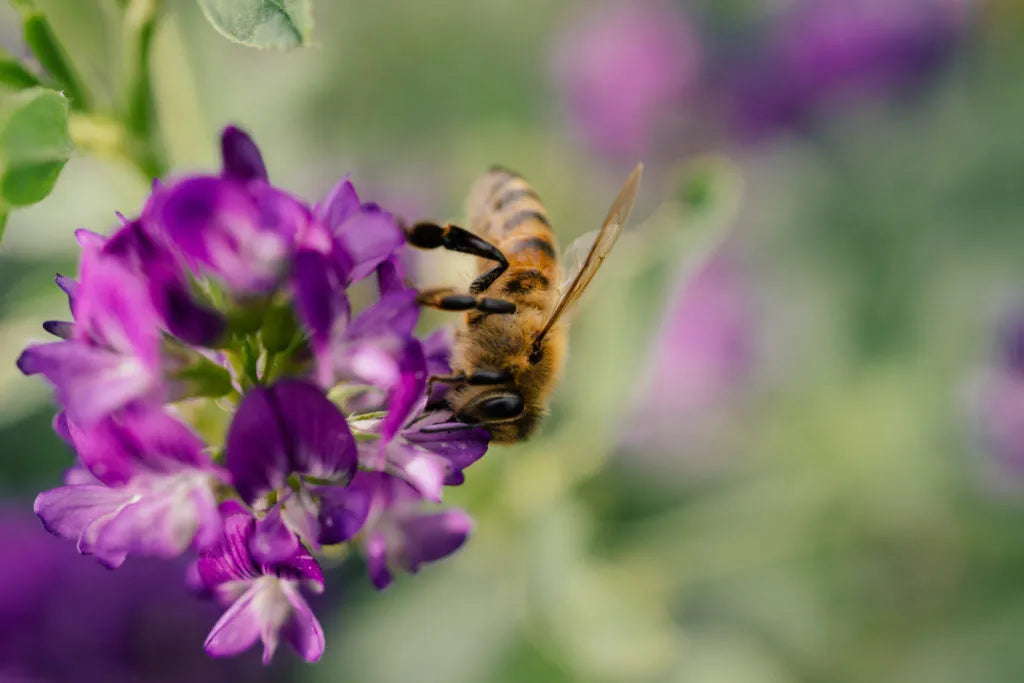How Bees Find the Best Pollen
Beekeeping
Worker bees in our local hives are always looking for new local pollen sources, because it’s the one ingredient they need to make honey. So, when they find a tasty new flower, it’s big news for the whole hive. No single bee can make enough honey for the whole hive – in fact, one bee will only produce about 1/12th of a teaspoon of honey in her entire life. So, how does a scout announce her sweet news? In a way as beautifully complex as the flavors in her hive’s honey. When a scout bee returns all bundled up with pollen, she knows she has to recruit other foragers to help her get the job done. So, she takes a cue from the big box store playbook and starts handing out free samples. She’ll share the pollen with her fellow bees, quickly gathering an intrigued audience. Once all eyes – seriously, a lot of eyes – are on her, it’s time to tell them the plan. Only problem is, she can’t talk, bark, chirp or moo. But she can do one thing: shake it.
The lone bee proceeds to step forward by “waggling” back and forth up to 13 times a second. That’s much, much faster than any human can dance. Frankly, to the untrained eye, it looks more like vibrating than dancing. She’ll then circle back to where she started and waggle once again in the same direction to add emphasis.
The length of the waggle is proportional to the distance the group will need to travel. This way, bees can decide if the trip is worth their effort. But things get interesting when it comes to giving directions.
Remember that honeycombs in the hive are vertical. Bees spend most of their lives hanging off the side of a honeycomb, not flat on top of a surface, and the waggle dance is no exception. During a waggle dance, a waggle straight up the honeycomb represents the direction of the Sun, and a waggle at an angle represents that angle relative to the Sun. So, if a bee waggles straight down, she’s saying, “Want more of what you just ate off my back? Well, it’s the opposite way from the sun, like, right now.”
Once bees see the dance, they head outside, look for the Sun and set off in the same direction the scout indicated with her dance – but along the horizon, like directions on a compass. Bees are able to interpret a few waggles in the middle of their hot, loud, crowded hive into directions they can actually follow in the outside world. But that kind of everyday miracle is just what bees do; they’re incredibly good at teaching and learning from each other, operating almost as one mind.
If you’re still a little fuzzy on the details, this site has some diagrams that may help clear things up. Or, if you’d rather just taste the fruits of the waggle dance – AKA raw and unfiltered honey from a variety of pollen sources – we can direct you to ‘em: they’re right here. No waggle dance necessary.

